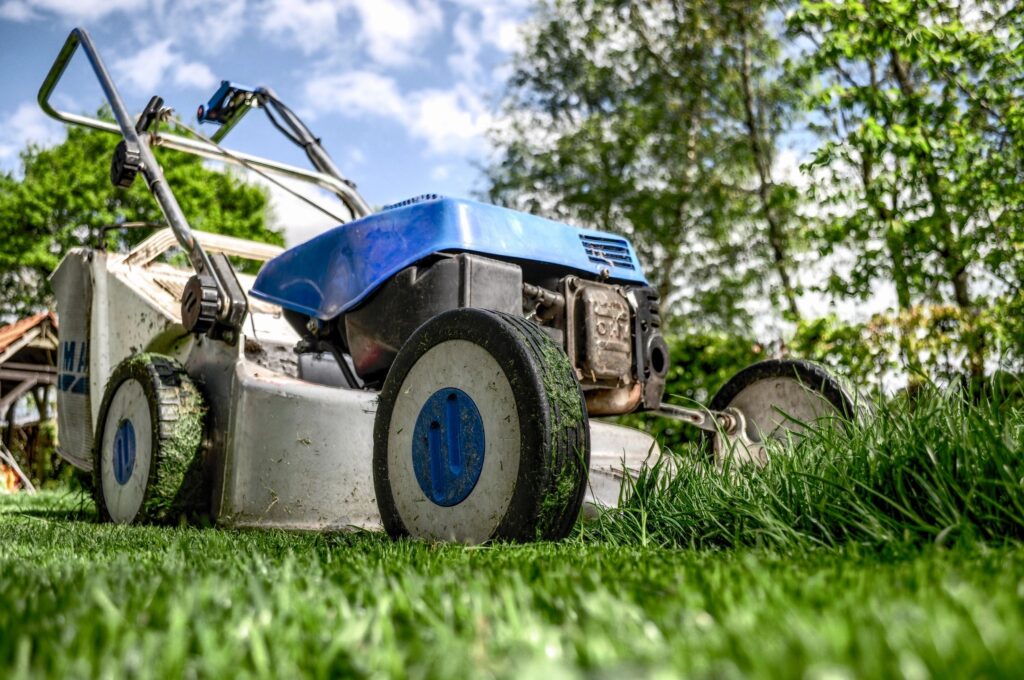By, the Old Guy with the Ponytail
We all know that not mowing in a timely manner severely impacts visual turf quality but what else is going on with the overall health and durability of your turf when you don’t mow properly? We’ll tell you the proper mowing techniques and more in this article.
There are proper mowing techniques that have a direct impact on turf quality.
- Sharp blades are important. A dull mower blade not only causes poor visual lawn quality but also increases transpiration (moisture consumption and loss). It also increases the potential for leaf fungus.
- Proper timing is critical. Mowing should be scheduled so that no more than 1/3 the green leaf is removed at any one time. Removing more than 1/3 the green leaf interferes with the ability of the grass to produce carbohydrates which are the energy source of the grass. As a result, the lower a lawn is maintained; the more often it should be mowed so as not to remove more than 1/3.
- Height of cut is another critical factor in proper mowing. Height of cut affects many aspects of a quality lawn. Different species of grass have different mowing height tolerances. Perennial rye can be maintained as low as ½” when managed in accordance. Bluegrass is maintained at 1” on many athletic fields. Tall Fescue, on the other hand requires a minimum mowing height of 2”. A lawn in a shaded area should be maintained at a relatively higher mowing height than a sunnier lawn location. Restricted sunlight requires more leaf surface to produce the required energy for turf growth.
- Turf Grass In general, turf grass will maintain a depth of root system relative to the height of cut. A lawn that is maintained at a shorter height will maintain a shallower root system. Likewise, a turf grass maintained at a taller height will maintain a deeper root system. For this reason, it is beneficial for the draught tolerance to raise mowing height in the summer.
More on Mowing Height
During times of optimum growth, mowing at a height that allows sunlight to reach the crown or base of the plant will provide the thickest turf. At less than optimum turf density low mowing height can have a number of negative consequences. It can increase crabgrass and broadleaf weed populations. It can increase soil evaporation and drying. This can increase draught stress. Low mowing height in the late fall minimizes carbohydrate production which influences health and vigor the following season. Low mowing height in the fall also decrease soil insulation. With cooling temperature trends, the lawn will go dormant earlier and cease to produce new root mass.
Lower mowing height in the spring, on the other hand, causes the soil to warm sooner and as such, stimulates growth.
Turf Management for Proper Mowing Techniques
As always, turf management is a juggling act where we constantly have to consider risk verse reward when determining a strategy. It’s really very simple though, as long as you do more right than wrong, your lawn will improve.
The Old Guy with the Ponytail (aka Jim) works at the Annandale Location. Feel free to stop by or give a call with any questions or if you’re looking for advice! All three locations have a full staff of knowledgeable employees looking forward to helping you.


Leave a Reply